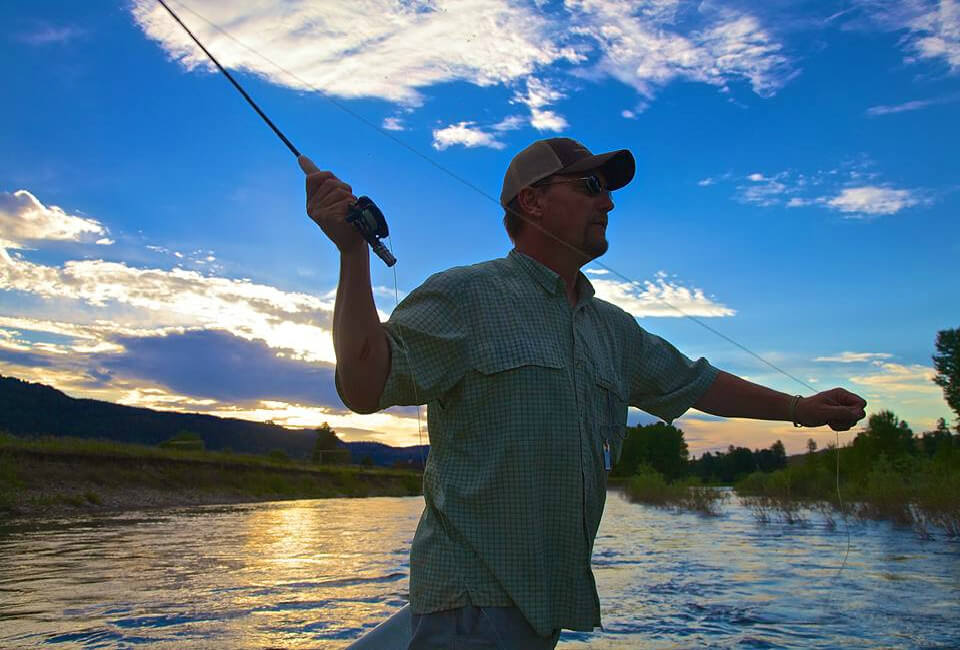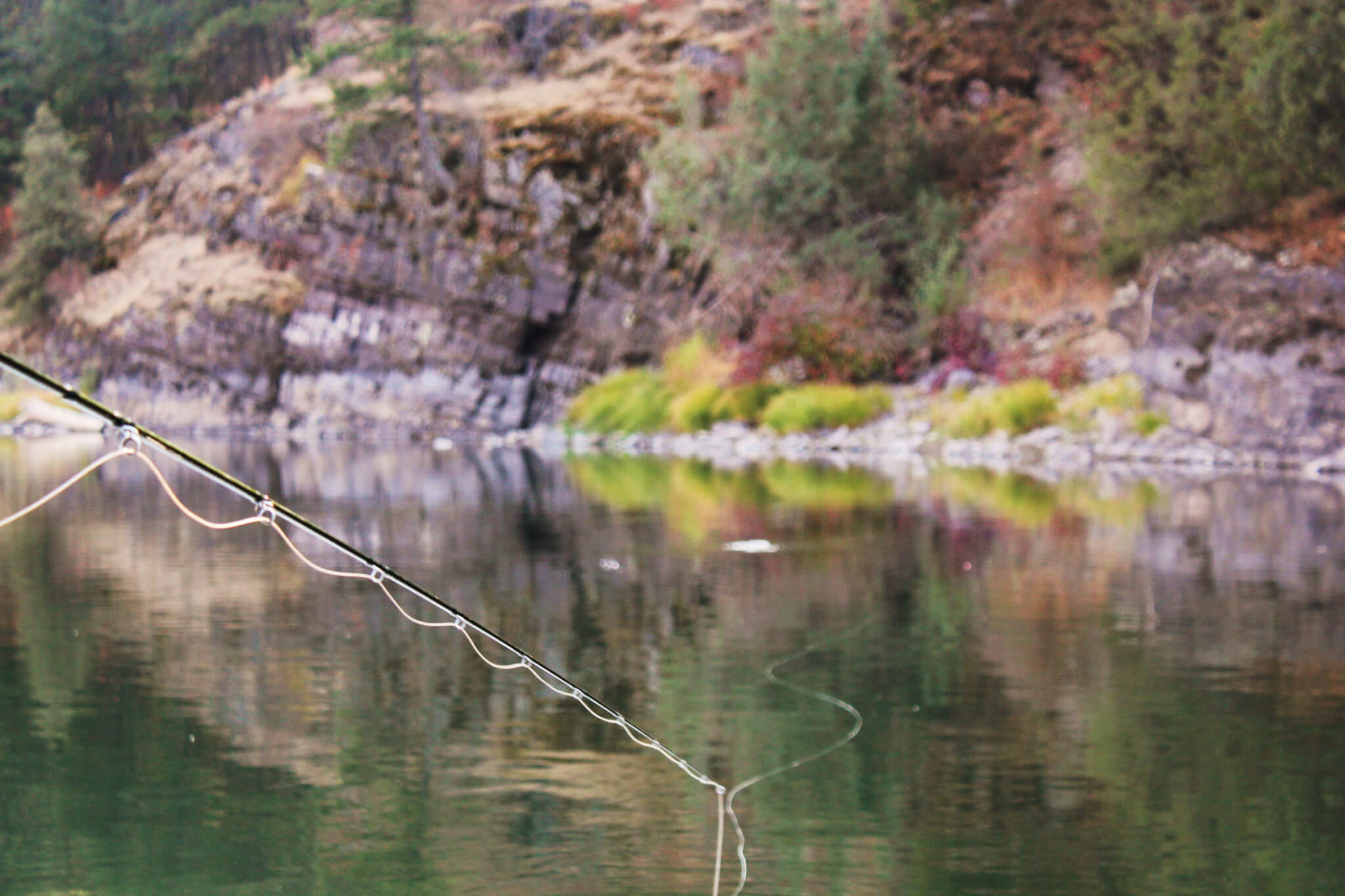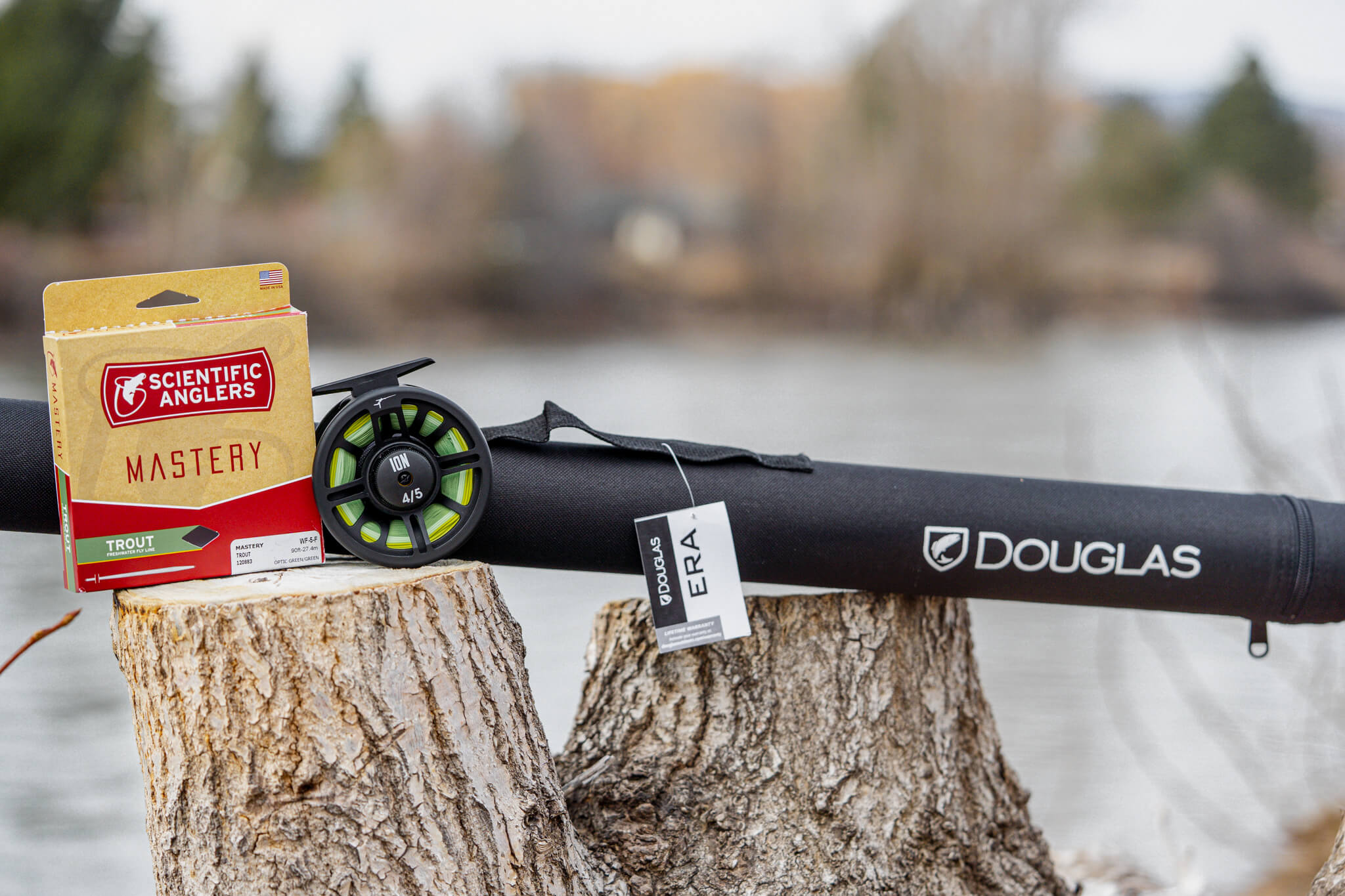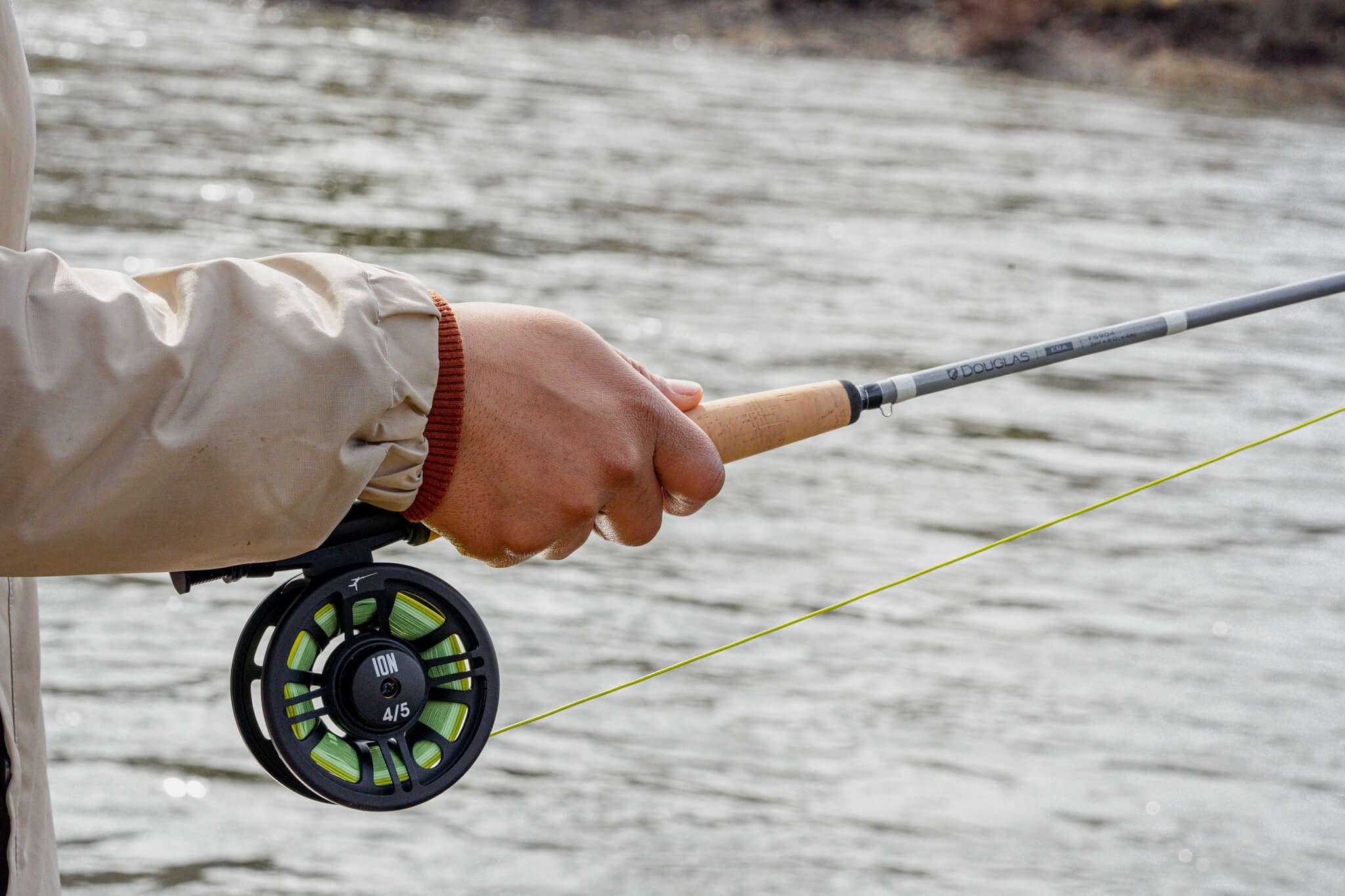How To Mend Fly Line
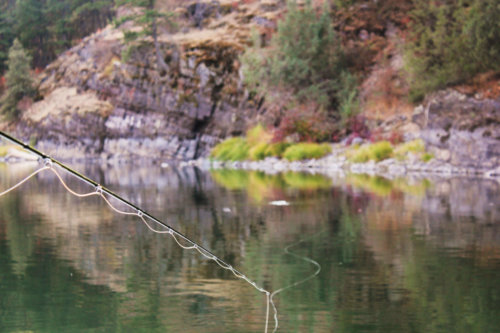
In this section we explain how to mend fly line and the importance mending while fly fishing.
Fly fishing Mending is defined as manipulating your line and leader to enhance or lengthen the drag free drift of the fly. Mending provides a longer drift from your cast, and multiplies the opportunities to catch a trout. Knowing how to mend your fly line will exponentially increase your success on the water.
The moment your line hits the water, every current in the river affects it. Each current seam pulls the line in a different direction, at different speeds, removing slack and ultimately causing your fly to drag. Mending, whether done after the line hits the water or during the cast, is designed to prolong controlled slack to your line, extending the drag free drift.
Watch an experienced angler fish, and you see the tip of their rod is in constant motion. Wiggling a bit left, then maybe a bit right or a bit more left- the tip of the rod is moving. When the tip of the rod moves, the line moves in a corresponding manner, changing its position on the water. The angler is shifting the line’s position relative to the current to eliminate drag. These manipulations can be subtle or large, but all are designed to realign the line in such a way that slack is re-inserted to extend a good (drag-free) drift.
We divide fly line mending into two categories- water mending and aerial mending. A water mend takes place after the line lands on the water. An aerial mend takes place during the cast. Both are designed to reduce the current’s effect on the line, and can be used in tandem. Water mending fly line is easier, and we’re going to discuss that first, in terms of nymphing with an indicator. The same principals apply to dry fly fishing.
An indicator is made of foam, hollow plastic or wool and does two things. It controls the nymph’s depth, and provides a surface visual mimicking the nymph’s underwater path. Basically, it’s a bobber for fly fishing. For our purposes, we are only going to discuss the indicator as a visual aid- you can find out about depth control here.
When your indicator drags, so is the fly (flies) underneath it. When we talk about indicator drag, we mean fly drag as well, but will only refer to the indicator for simplicity.
The fastest way to check if your indicator is dragging is cast into a seam with bubbles in it. Choose a bubble close to your indicator, and watch both. You’re monitoring the relative distance between bubble and indicator, as well as their speed. The moment the indicator deviates from the path the bubble is traveling, you have drag. Whether the indicator speeds up, slows down or moves away from the free-floating bubble, your indicator is no longer floating freely. The currents have removed slack, pulling your line and dragging the indicator with it.
If you’re like most, you’ll flip the tip of the rod about a foot, and nothing happens. You flip the rod tip a couple of feet, and again nothing. This time you lift the rod high in the air and seriously flick the rod. The entire line comes corkscrewing out of the water and lands in a heap at your feet. You’ve just learned something. Proper fly line mending is found somewhere between a tiny movement and a complete flip and sweep!
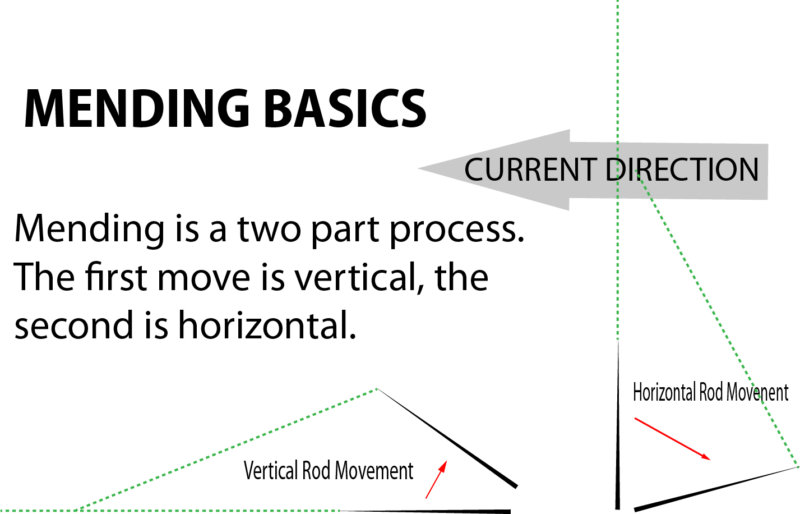
Whether up or down stream, large or small, these movements are the fundamentals of all mends. Mending fly line is a two part action. The first is a vertical lift. The higher the rod tip travels, the more line comes off the water. Removing line from the surface lessens resistance and minimizes disturbance. Next, swing the rod horizontally. The horizontal sweep defines how much line is moved. The higher the vertical lift, the more the fly moves. The wider the horizontal sweep, the more the fly moves. It’s a dance, no question, getting a good mend in without moving the fly out of the zone. PRACTICE!
While every mending opportunity is unique, mending fly line has some very basic concepts. You mend against the current. If the current drags your line downstream, mend it up stream. If the line lags behind the current, you mend it downstream. Fly fishing Mends come in all different sizes. Sometimes you’re mending a tiny portion of the line, sometimes you’re mending the fly line and part of the leader all the way to the indicator. Many times, a perfect mend moves the line and leader without moving the indicator.
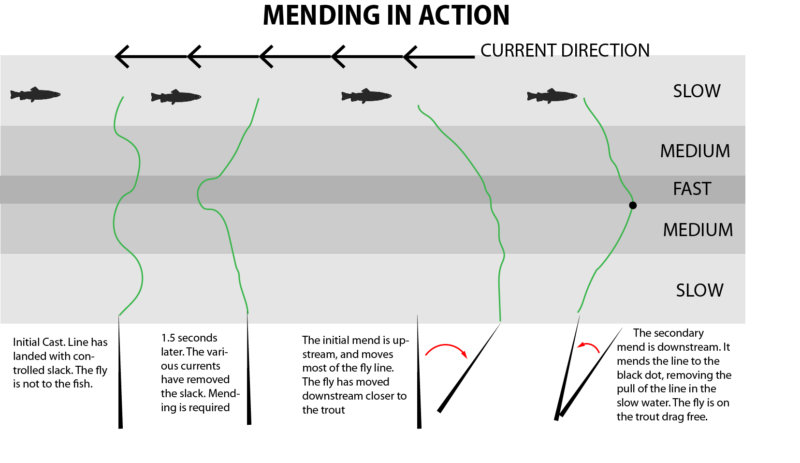
The mending process in action. Cast, check current affect, and mend accordingly
This is a very important concept in fly fishing mending. The current only affects the line where it’s in contact with the water. Seems basic, but it’s important to say. Many novice anglers make a cast and drop the tip of the rod to the water. While this is correct in some situations (specifically streamer fishing), it’s not correct when controlling drag. If you hold the rod at shoulder height, pointing directly at the indicator, you lift about 11 feet of line off the water. That’s 11 feet of line not affected by the current! Less line on the water, less line affected by the water, and a longer drift.
It’s important to point the tip of the rod at the indicator at shoulder height. Holding the rod straight up in the air creates a sag in the line, removing drag. Holding the tip too low doesn’t lift as much line from the water. Study the line at the tip to see the angle and height that’s most effective.
Study the line as it hits the water. Where’s the most drag coming from. It’s astonishing how taking two steps- forward, up or downstream- can change the drift of the fly. You are NOT a tree. Don’t grow roots! Be aware of current and how they affect your line and indicator. If the current at your feet is slow and hindering the drift, two steps forward may change that. Maybe two steps up or downstream changes the current speed at your feet. Experiment. Remember Einstein’s definition of insanity- doing the same thing over and over again and expecting a different result. What’s the worst that can happen? You have drag, and no fish. If you move, you still might not catch a fish, but at least you’ve learned something. It might be the place you just were was better, but it’s still learning!
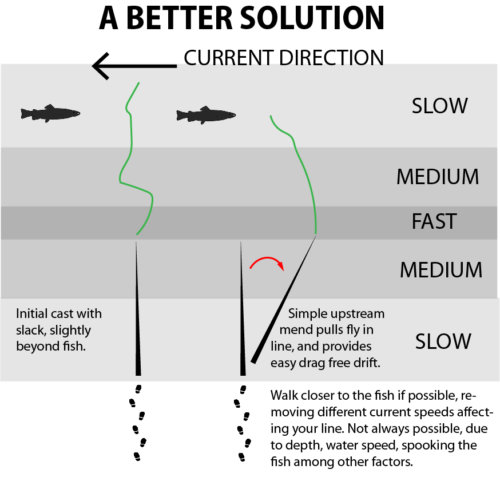
Fly fishing is attention to detail. It starts with knots- tightening them fully so they don’t break. Keeping your tackle clean and functional. It’s just as important in mending. It’s not enough to know your line is dragging- you need to watch and see where the line is dragging. What is the reason, and then mend to eliminate the problem area. If you’re not studying the cause, how can you counter it?



Three Examples of the cause, and what the line looks like BEFORE mending
What does the cause look like? It can be an exaggerated curve in the line caused by a rapid current in the middle of the cast, or a sharp angle in the line created by a slow next to a fast current. The cause is seen as a dramatic change in the line from the way it landed on the surface. Yes, that’s how closely you’re watching. While watching the indicator and a bubble, you’re also watching the line to see how it changes shape. Then, use the rod to move the line, counter to the shape it has taken.
This assumes your indicator is where you want it. Where conditions allow, some anglers deliberately overshoot their target, then pull back with an upstream mend, placing the indicator exactly where they want it- with slack that allows it float freely. It’s a very good method of placing dropping your indicator in a seam with a good drift. It doesn’t work on fish holding tight to the bank. Takes some practice, but it’s a good skill to have.
The most difficult aspect of mending fly line to grasp is when you need to do it. We have and continue to teach a lot of novice anglers how to fish, and explaining fly line mending to someone unfamiliar with the concept is tricky. Each cast is unique, and requires an angler to make a different decision for each one.
Novice anglers rarely throw the same cast twice in a row. We bet you’ve seen this! One cast goes zipping out and lands in almost a straight line. The next cast lands in a kerfluffle, not a straight line to be seen. Each one of these casts requires a different response.
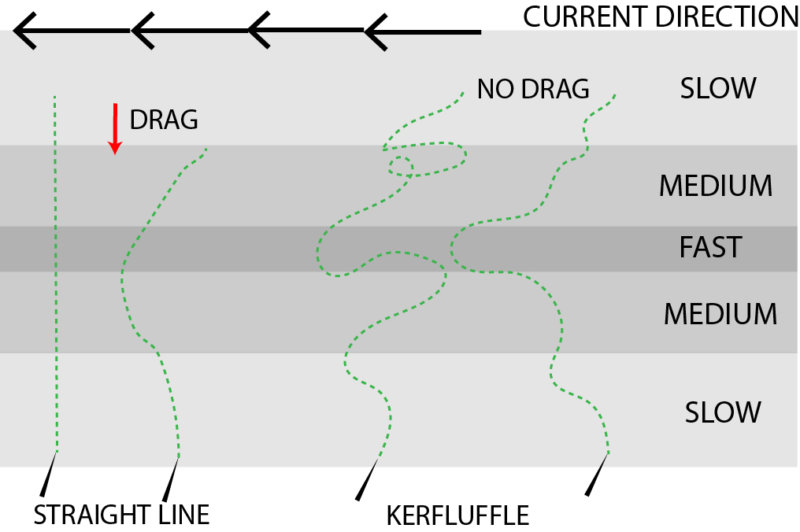
The straight line cast will need attention pretty quickly. Mending introduces controlled slack in the line, and a straight cast is indicative of no slack. When you do the bubble/indicator examination, you’re going to experience a rapid deviance from indicator and bubble. A straight line cast will require a lot more fly line mending.
The kerfluffle cast, on the other hand, may not require much mending. The slack is built into the cast. You may not have meant to- most novice anglers live for the ZOOM cast! But a squiggly cast has built in slack. However, too much slack hampers your ability to set the hook should a fish come and eat. Here’s some angling math. You have a 9 foot rod. You’ve cast 40 feet of line. Due to technical difficulties, the fly lands 20 in front of you- with lots of slack! Because you have a good drift due to slack, your indicator plunges down, indicating a strike. You sweep your rod back to set the hook, and nothing happens. The indicator doesn’t even twitch.
The math says with 40 feet of line out, and the indicator only 20 feet away, there’s at least 20 feet of slack line. No matter what you do, the sweep of a 9 foot rod can’t be longer than 18 feet. It’s often less, depending where the tip of the rod is at the beginning of the sweep. So you strike, remove 18 feet of slack . . . which still leaves 2 feet of slack unaccounted for, while the trout swims away, wondering why the food had a rigid backbone!
Mending is controlled slack. We can’t stress that enough. It’s simple to add slack. It’s difficult to add enough slack so your fly drifts correctly, still keeping close enough contact to make your hook set count. You see bumper stickers in fly shops saying, Slack Is Evil. We can only surmise they’re streamer fishermen!
Let’s return to the experienced angler, and talk about why the tip of their rod is in constant motion. Drag is a cumulative process. If you cast and remain motionless, the current affects the line until there is no slack. It takes a big mend to fix this. However, if you manipulate the line from the word go, the drag doesn’t accumulate as rapidly. You’re putting off the inevitable with smaller, more consistent movements that delay the big drag onset!
Water mending fly line, by its nature, disturbs to the water. No matter how light your touch, moving line on the surface creates some sort of ruckus. Sometimes it’s poetry in motion. Sometimes it’s a spray of water and 35 feet of line coiled up at your feet. Either way, you’re letting the fish know you’re there.
It’s a good thing you practiced your casting. It’s about to get tricky.
You’re standing at the river, casting across stream as the river runs from right to left. <<< That way. You’ve waded out into some faster water, and casting across it into some slower water. In the two previous casts, you’ve needed to mend the line to your right (upstream) to offset the faster current. Got it?
What if, during the cast, you placed a mend in the line, so your indicator lands in the same place, but the belly of the line lands upstream of the indicator. You can do it, and it’s called a reach cast.
To do a reach cast, you make a standard cast, but with the energy to carry the line about 10 feet further than it needs to travel. As the line is straightening out, on its way to the target, you reach with the tip of the rod to the right. Voila! You’ve put a mend in the line before it lands. Look at the diagram of Mending Basics. The horizontal rod movement for mending is exactly the same for the reach cast.
OF COURSE YOU HAVE TO PRACTICE!! It doesn’t come instantaneously! The first time you do it, you’re going to jerk the rod so far right the entire line lands about two feet in front of you. The next one will fall 9 feet short, because you didn’t compensate for the loss of distance created by moving the rod tip. It’s trial and error. And like all trial and error, there’s more error at the beginning! But it will soon become a manageable skill, and will serve you very well in that spot.
Now the river is running left to right. >>> This way. You’re going to do the exact same thing, except the rod tip reaches to your left. For a right-handed caster, this means the rod crosses over your body. Not as comfortable, huh? You can’t always find that right to left spot! You’re going to have to master the reach cast to both sides.
The reach cast is a timing thing. Move the rod tip to soon, and the cast in inaccurate. Move it to late, and the line doesn’t mend. Move the tip too violently, and the line will spin and coil. As the reach becomes more familiar, you’ll find you can mend beyond the tip of the rod during the reach. You’ll find, depending on where you’re standing and the current speed, you may not reach the full rod length. Every angler, experienced or novice, needs to see how the line reacts to the current after the reach, and mend accordingly.
It always comes back to that experienced angler at the beginning, constantly adjusting their cast. Just because you’ve made a reach cast, you don’t get to stand there and stare. As soon as the line hits the water, you’re watching it to see where the current is affecting it. Where is the line straightening, where is it bunching up? And in response to any of those actions, you use the tip of the rod to mend the fly line in a counter direction. All the while watching the indicator and a bubble to make sure the float is drag free.
It gets tricky.
70% of the fish are found within 15 feet of the bank. Banks offer current breaks (remember the thalweg) and often have lots of structure pushed up against them. On a small to midsize stream/river you often find yourself standing in fast water, trying to drop your fly against the bank in very slow water. Sometimes the reach cast doesn’t get it done. The water at your feet and beyond is moving too fast in comparison to the slow water on the far edge.
Another aerial mend is the steeple cast, also known as the puddle cast. This is a cast primarily used with dry flies, as the nature of the cast makes it difficult to utilize with an indicator and nymph. It’s a simple cast, but not always precise. Instead of throwing the forward cast at the target, you throw the steeple cast about 30 feet above the target. The line extends above the water, and falls in a puddle over the target. It’s a planned kerfluffle cast.
That puts a lot of slack in the line, and earlier, we said you might not be able to set the hook due to an excess of slack. This can be true of the steeple cast. Then why would you use it?
It’s used when the water is moving too fast to be effectively mended in. It’s effective when throwing directly across current, or standing in fast water and throwing into slow water.
Setting the hook depends on the line being pulled tight by the current. You use the surface tension on the line to create enough friction to set the hook. It doesn’t always work, but this is a cast used when no other will. Catching a fish means it has to eat first, and if the steeple cast is the only way to get a drag free drift, then you use it.
A drag free drift is the goal when nymphing and using dries. To float freely, the line must have some slack in it. Mending fly line is the way to add controlled slack to your cast. It’s the most important skill an angler can have. You can get away with a poor cast if you mend well. Slack, when used in moderation, isn’t evil- drag is evil. Any method you use to get slack into the line is a step in the right direction.
Additional Beginner Fly Fishing Resources
